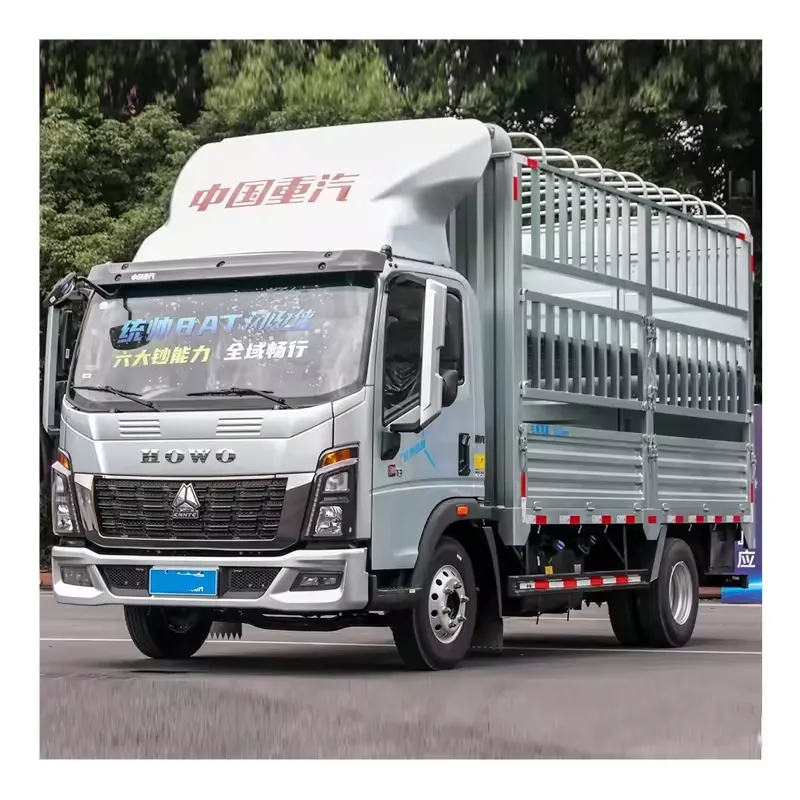24-D10, Building 3, Aosheng Building, Shunhua Road Street, Jinan, Shandong, China +86 13969167638 [email protected]
The transportation industry continues to evolve rapidly, making it crucial for fleet managers and owner-operators to thoroughly evaluate cargo truck specifications before making significant investments. Modern heavy-duty trucks represent substantial capital expenditure, and choosing the right specifications can mean the difference between optimal performance and costly operational inefficiencies.
Today's cargo trucks must meet increasingly demanding requirements, from fuel efficiency standards to safety regulations, while delivering reliable performance under diverse operating conditions. Understanding these specifications requires a comprehensive approach that considers both immediate operational needs and long-term business objectives.
When evaluating cargo truck specifications, the engine serves as the heart of the vehicle's performance capabilities. Modern heavy-duty engines typically range from 12 to 15 liters in displacement, delivering between 400 to 600 horsepower depending on the intended application. The key is finding the right balance between power output and fuel efficiency.
Manufacturers now offer various engine options optimized for specific duty cycles. Long-haul operations might benefit from engines tuned for optimal cruise efficiency, while regional delivery applications might require more flexible power bands for frequent stops and starts. Advanced features like automated engine shutdown and intelligent cruise control can significantly impact fuel consumption.
The transmission system plays a crucial role in overall vehicle efficiency and driver comfort. Automated manual transmissions (AMTs) have become increasingly popular in heavy-duty cargo trucks, offering improved fuel economy and reduced driver fatigue. These systems can predict and select optimal gear ratios based on load weight, road grade, and driving conditions.
When reviewing cargo truck specifications, pay attention to transmission features such as grade-sensing capabilities, cruise control integration, and predictive shifting technologies. These elements contribute to both operational efficiency and vehicle longevity.

The truck's frame serves as the foundation for all operations, making it a critical element in cargo truck specifications. Modern frames utilize high-strength steel alloys that offer superior durability while reducing overall weight. The frame's design must provide adequate flexibility to handle various road conditions while maintaining structural integrity under maximum loads.
Consider specifications such as frame rating, resistance to bending and twisting, and compatibility with various body types. The right frame configuration ensures optimal weight distribution and helps prevent premature wear on other components.
Advanced suspension systems significantly impact ride quality, load stability, and maintenance requirements. Air suspension systems have become standard in many applications, offering adjustable ride height and improved load distribution. When evaluating cargo truck specifications, look for features like electronic level control and suspension dump capabilities.
The right suspension specification depends heavily on the intended application. Long-haul operations might benefit from softer settings that prioritize driver comfort, while severe-service applications require more robust components capable of handling challenging conditions.
Modern cargo truck specifications increasingly include sophisticated safety technologies. Features like adaptive cruise control, lane departure warning systems, and automatic emergency braking have become standard offerings. These systems not only enhance safety but can also improve operational efficiency and reduce insurance costs.
When evaluating safety features, consider both active and passive systems. Look for specifications that include comprehensive sensor arrays, camera systems, and integration capabilities with fleet management software. The ability to monitor and analyze safety data can provide valuable insights for training and maintenance programs.
Today's cargo trucks serve as mobile data centers, generating valuable information about vehicle performance and operational efficiency. When reviewing cargo truck specifications, evaluate the available telematics systems and their capabilities. Look for features that enable real-time monitoring of critical systems, fuel efficiency tracking, and predictive maintenance alerts.
Consider the compatibility of these systems with existing fleet management software and the ability to integrate with other business systems. The right technology specification can streamline operations and provide valuable data for business decision-making.
The optimal engine size typically falls between 13 and 15 liters for long-haul operations. This range provides the best balance of power and efficiency for sustained highway operation. However, the exact specification should be based on factors including typical payload weight, route topography, and fuel efficiency goals.
Aerodynamic specifications can significantly impact fuel efficiency, potentially reducing fuel consumption by 5-15% depending on the features implemented. Key elements include roof fairings, side skirts, and gap reducers between the tractor and trailer. These specifications become particularly important for trucks operating primarily at highway speeds.
Automated manual transmissions (AMTs) generally offer the best overall value for most applications. They combine the efficiency of manual transmissions with the convenience of automatics, while also reducing driver fatigue and potential for human error. AMTs typically provide better fuel economy and lower maintenance costs compared to traditional automatic transmissions.
Fleet managers should review cargo truck specifications annually to account for technological advancements, changing operational requirements, and new regulatory standards. However, major specification updates typically align with vehicle replacement cycles, usually every 5-7 years for heavy-duty trucks.